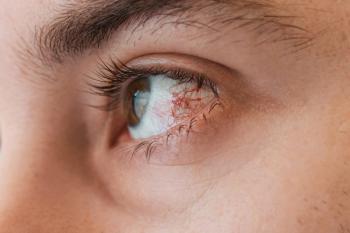
Alzheimer's disease: visual variant demands attention
During the American Academy of Optometry's Academy 2014, Leonid Skorin, Jr., OD, DO, MS, described a visual variant of Alzheimer's disease (AD) that may put optometrists on the front lines of this illness.
Denver-During the
“The visual variant of AD usually starts before the person is exhibiting any significant cognitive changes. We might see these people before they even have a diagnosis of AD.”
Formerly known as posterior cortical atrophy, the visual variant of AD stems from cerebral atrophy of the occipitoparietal and occipitotemporal regions of the brain that can be seen on neuroimaging.
“These are the patients who are the most frustrating. They may have normal visual acuity, but they bitterly complain that they can't see well.” Further testing can reveal that this condition adversely affects contrast sensitivity and color vision as the disease progresses, says Dr. Skorin. “If you have the capacity to do electrophysiological testing, you find there is an abnormally high variability in saccadic accuracy (dysmetria),” as well as increased latency.
When optometrists see a disconnect between results of gross acuity testing and what patients are saying, he says, “Most of us would
Such patients typically can see text or faces reasonably well, he said, but they can't make sense of the letters (alexia) or place the faces. They can see their environment, but not comprehend it or navigate within it. Similarly, simultagnosia means they can't perceive more than one visual target in a complex scene.
Diagnostic tests under evaluation for AD include amyloid testing of cerebrospinal fluid and positron electronic tomography (PET), he said. Additionally, Dr. Skorin said, two tests that optometrists soon may be using include the Retinal Amyloid Index (NeuroVision) and the Sapphire II (Cognoptix), which detect amyloid plaques in the retina and crystalline lens, respectively. “Potentially these will be much less expensive than PET scanning,” and they won't expose patients to radiation.
However, he says, “From a practical viewpoint, I am a cataract surgeon. So I'm removing these lenses. I don't know how we will be able to use the latter instrument in somebody who is pseudo-phakic.”
Newsletter
Want more insights like this? Subscribe to Optometry Times and get clinical pearls and practice tips delivered straight to your inbox.



















































.png)


